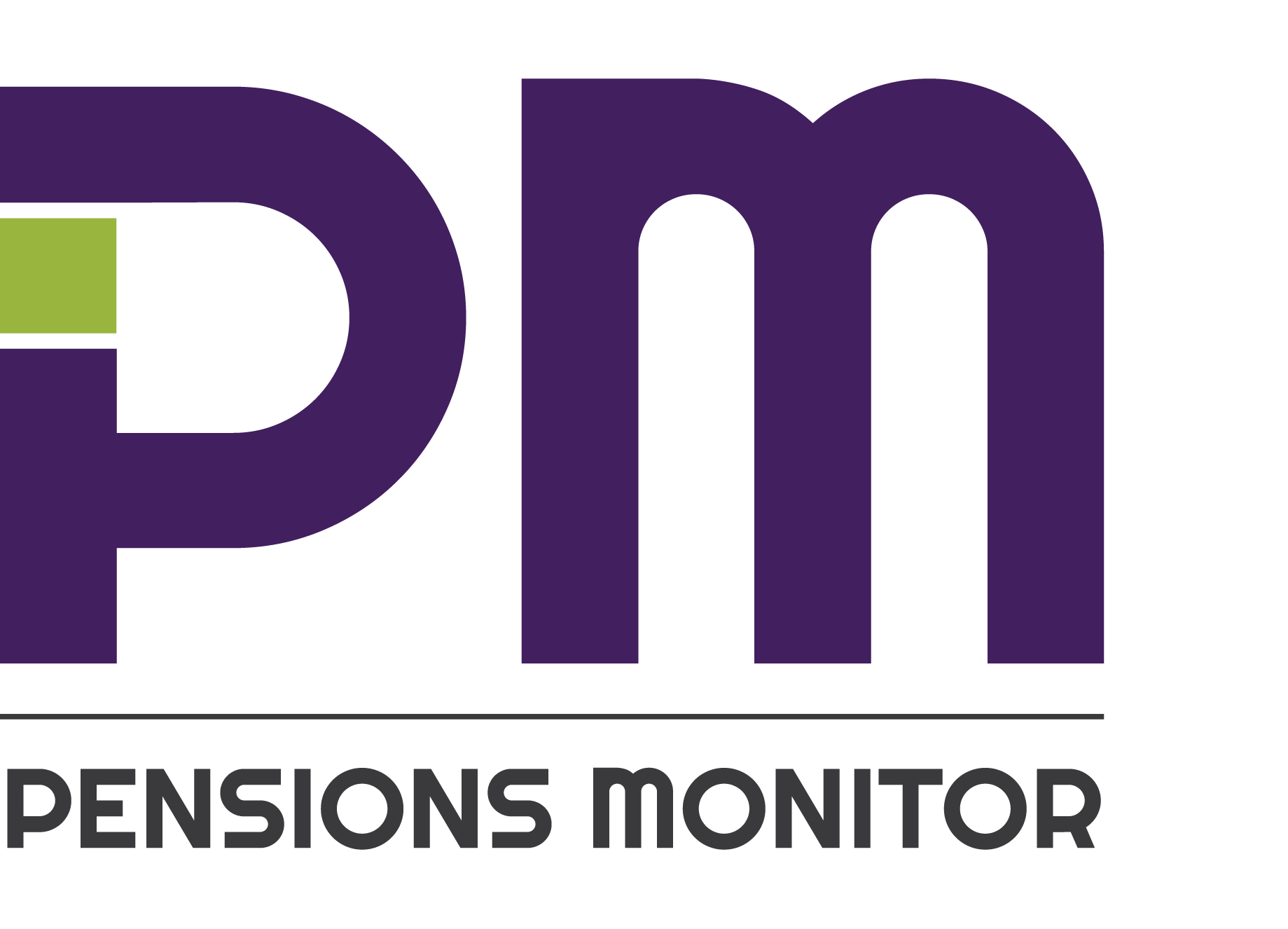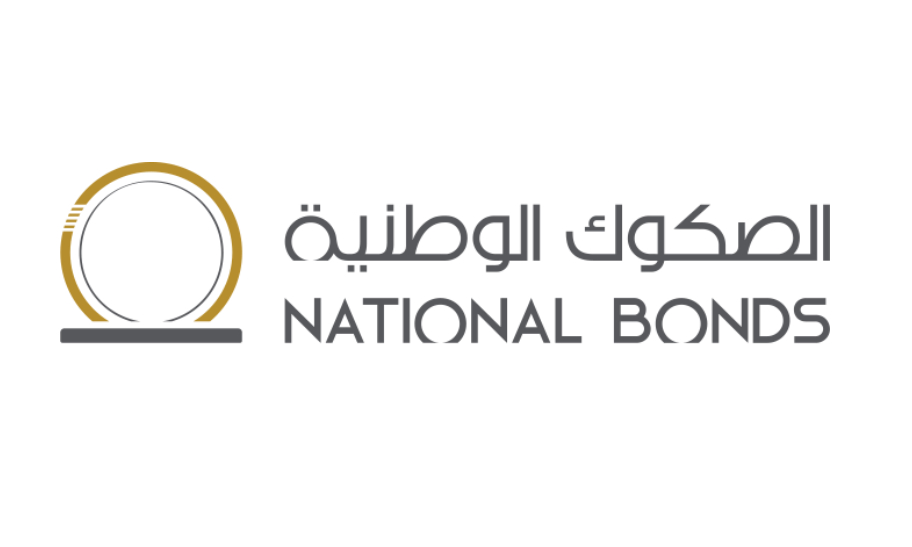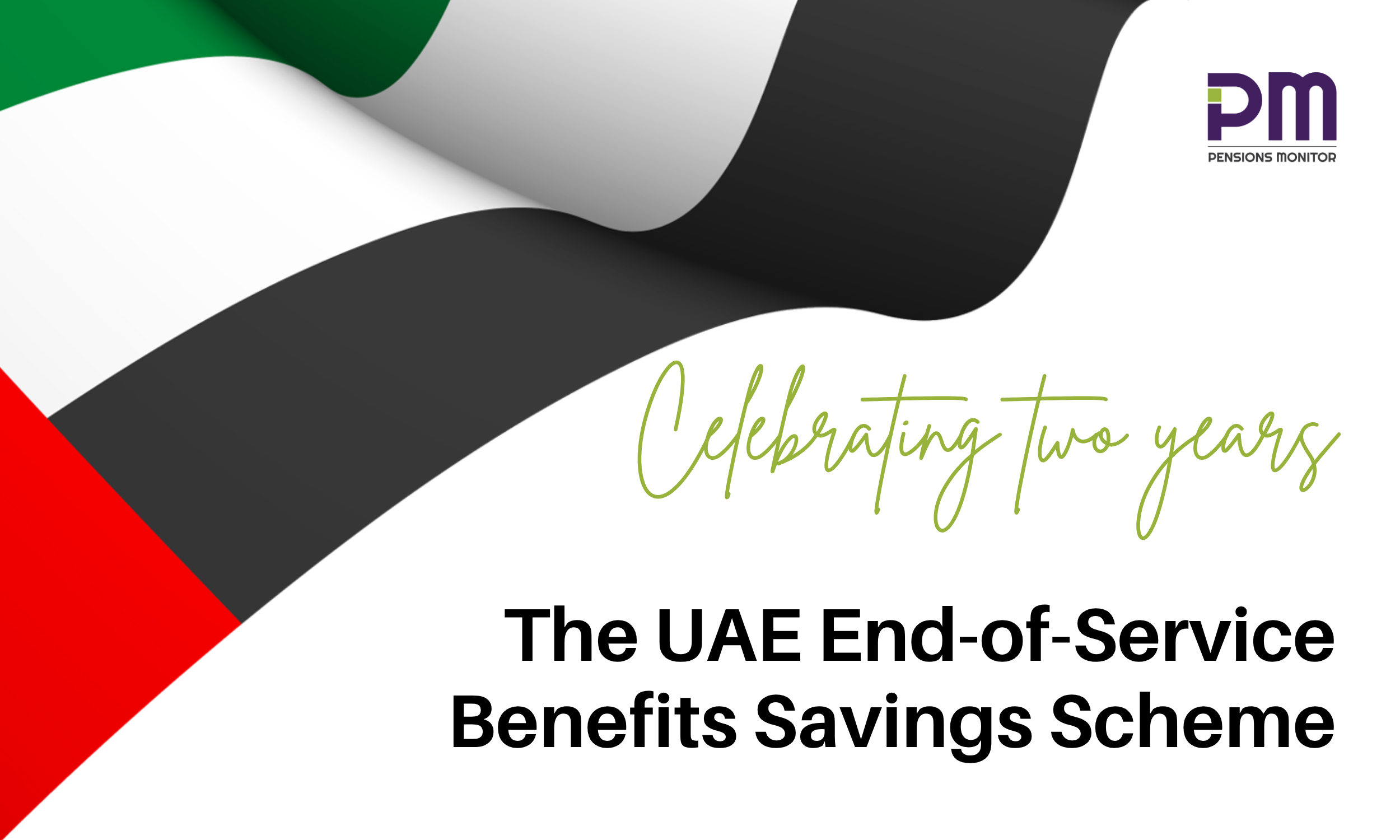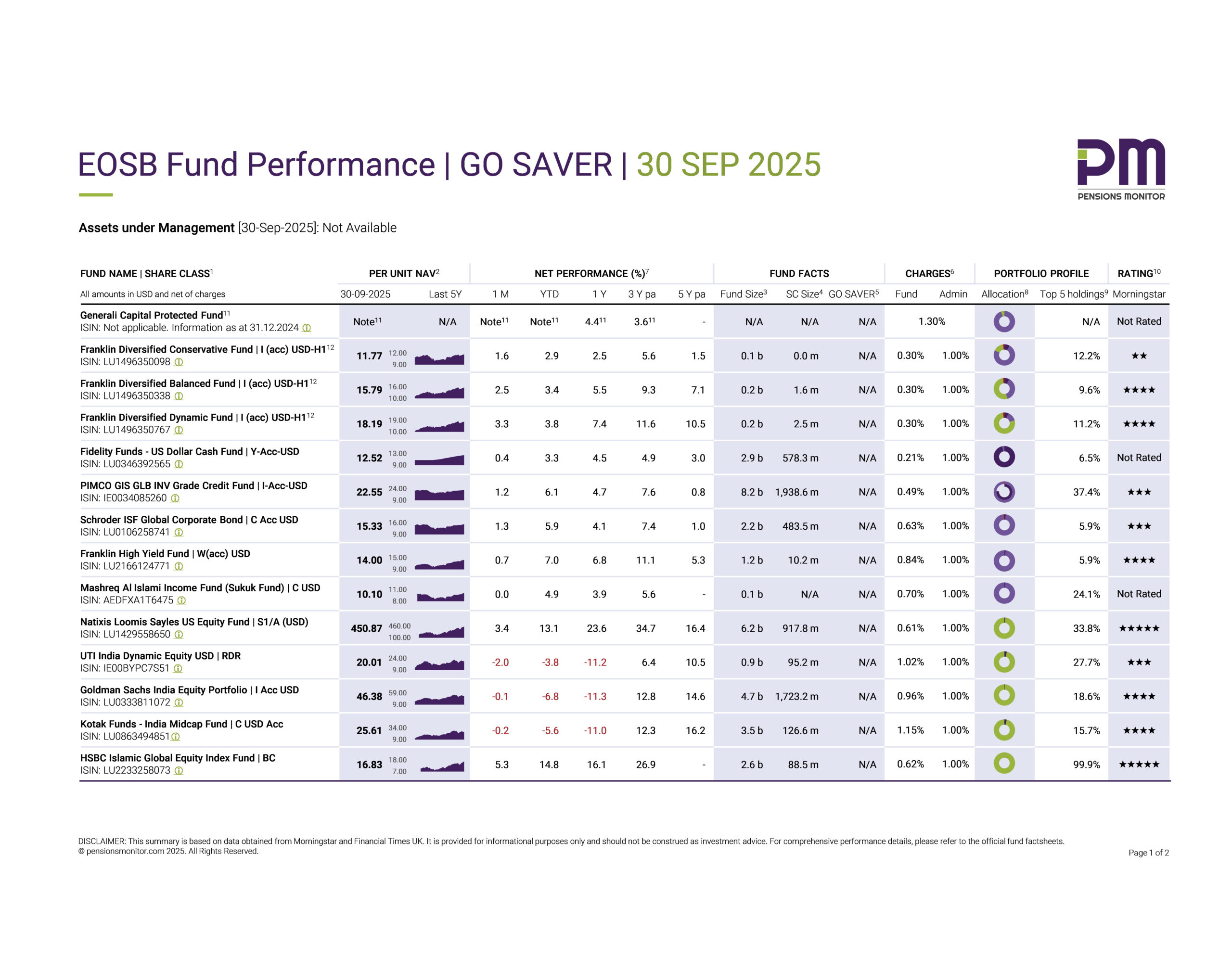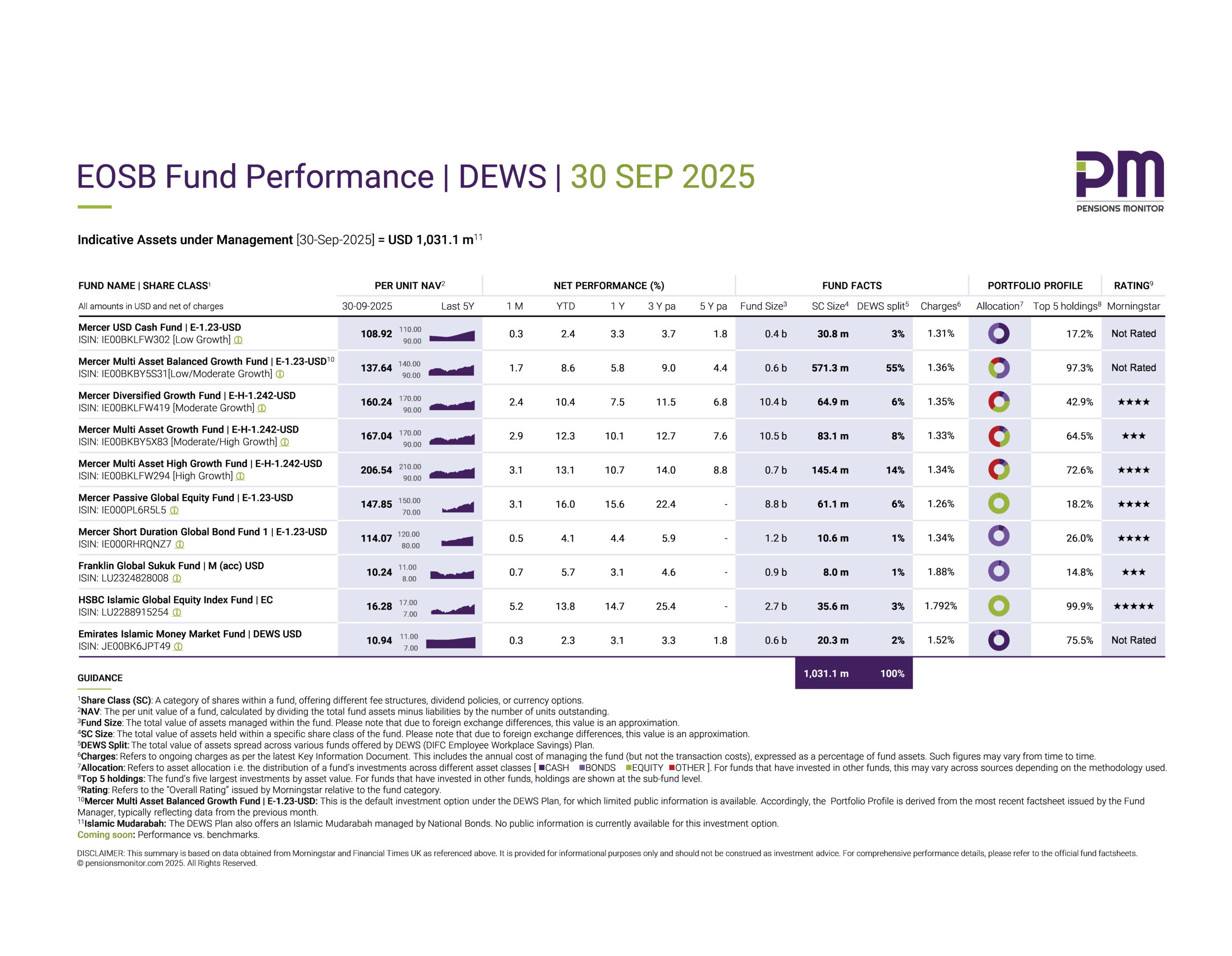
There’s been a lot of talk about End-of-Service Benefits (EOSB) in the United Arab Emirates (UAE) over the past year.
For expatriates in the UAE—who make up about 90% of the workforce—EOSB is one of the most important employee benefits. This lump sum payment is provided at the end of each employment, whether through resignation or retirement, to compensate for the absence of a pension system. But is it enough for a secure retirement, whether in the UAE or elsewhere?
Today’s article is a simple reality check.
Recap
Firstly, let’s remind ourselves how EOSB is calculated. In the UAE, it is the length of service (in years) with a particular company multiplied by your last basic salary. Employees who have worked for a company for at least one year typically receive:
- 21 days’ salary for each year of service for the first five years; and
- 30 days’ salary for each year of service beyond five years.
The reality: Is EOSB enough?
At first glance, EOSB seems like a generous offering. After all, it’s an additional lump sum that employees receive after years of hard work. But consider this typical scenario:
An expatriate employee starts working in the UAE at 25 and retires at 65, after 40 years of service at various companies. Over the time, he/she would have accumulated EOSB equivalent to say 36 months of basic salary. This equates to ~3 years’ worth of income, which, on its own, is very unlikely to sustain him/her for the next 15–20 years that he or she might live post-retirement. In fact, UK annuities at age 65 currently cost between 16 and 20 times the desired annual income, assuming say 3% annual escalation and possibly 50% payable to a surviving spouse. In practical terms, this would mean the following: Say, you’d like to retire with an annual retirement income of USD 48,000 (USD 4,000 per month). This means, upon entering retirement your cash pot should be at least 16 times this sum, i.e., ~USD 800,000. For most people, 3 year’s income falls woefully short of the 15 to 20 times required, to enjoy a decent standard of living during retirement.
Now with the new EOSB Savings scheme, chances are that the employee would have earned a return over time. And if the EOSB Savings have remained invested for long, then compounding could build up returns. However, assuming a 5.0% annual return, the added income may only extend financial security by a few months.
Furthermore, there are a number of other factors to consider:
- Inflation: The cost of living is constantly rising. Everything in future will cost more, hence one has to take inflation into account. Following COVID this has been particularly painful, but even during stable economic times inflation runs at 2-3% per annum. In other words, what might seem like a substantial EOSB sum today will lose its value over time.
- Healthcare costs: As retirees age, healthcare costs increase significantly and retirees in the UAE typically bear these expenses themselves without government-funded healthcare support. This is over and above medical inflation, which in turn exceeds inflation of other goods and services.
- Personal Loans: Unfortunately, it is not uncommon for workers to take out bank loans that are implicitly secured by their EOSB gratuity. The loans are typically used for consumption, be it a nice holiday or a new car. Once the EOSB gratuity hits the bank account, the bank will naturally insist on paying back outstanding loans first, resulting in a smaller sum available for retirement.
- Early withdrawal: Each time employees switch jobs, they get access to their End-of-Service savings (respectively they get paid out the EOSB gratuity). Often employees decide to spend this windfall, rather than to prudently invest for retirement. Therefore, upon entering retirement they often end up with the savings from the last job only, and not the savings from their whole career.
The new EOSB Savings scheme is not a pension plan
In short, we believe the EOSB Savings scheme, as its predecessor (EOSB Gratuity) are not full pension plans. We see two main reasons why this is so:
- Missing other pension pillars. In most countries, the pension provision follows the “3 pillar” model. Pillar 1 – state pension; Pillar 2 – employer pension; Pillar 3 – personal pension. Expats who work for a long time in the UAE may miss out on their home country’s state pension; and if they do not voluntarily save up a personal pension (pillar 3) then the employer pension (EOSB gratuity/EOSB saving scheme) is all they have – which is unlikely to be sufficient, as discussed earlier.
- Missing restrictions. In most countries, 2nd pillar pensions (i.e., employer pensions) come with strings attached, such as for example:
- one can only cash it out after reaching pension age;
- one can only cash out a certain sum per year; and
- one cannot use them as a collateral for a loan. This ensures that the employer pension is reserved for retirement and is not spent before.
Conclusion
We at Pensions Monitor think that the EOSB Savings scheme in the UAE is a great financial benefit for expatriates, however, it is not enough on its own to provide financial security in retirement. We think expats should view EOSB as just one part of their overall retirement planning strategy and take steps to save early and diversify their savings to ensure they can live comfortably after they stop working.
What do you think? Should regulations be tightened to foster long term financial security for employees, or should the system remain as it is? We are keen to hear your thoughts on the topic. Do write to us at info@pensionsmonitor.com.
Please do share this article with your colleagues and friends. Pensions Monitor discusses important aspects about EOSB that every working expatriate in the UAE should be informed about.
Our newsletters are absolutely free, sign up today!
